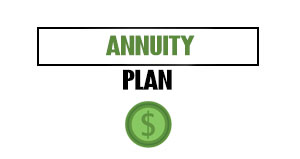Do you feel that your retirement dreams are a little too far away or that you’ll never be able to save enough? You’re not alone.
According to Bankrate, the majority (56%) of U.S. adults in the workforce say they’re behind in retirement savings — including 37 percent who feel “significantly behind.”
Although this concern spans generations, it’s particularly pronounced among Gen Xers (ages 43-58), who are nearing the end of their working years but are still too young to retire. They are the most likely generation to report falling behind in their retirement savings (69 percent). The same is true for 60 percent of baby boomers (ages 59-77), 49 percent of millennials (ages 27-42) and 42 percent of Gen Zers (ages 18-26).
Don’t panic if you find yourself in this situation. There are practical steps you can take to improve your financial situation and secure your retirement years. In particular, consider these 12 suggestions.
Table of Contents
Toggle1. Take stock of your current financial situation.
The first and most important step in reviewing your retirement savings is to examine your current financial situation. As a result of this process, you gain a clear understanding of where you are and can set realistic goals for the future. For a complete financial picture, follow these steps:
- Calculate your total savings and investments. Add up all of your savings accounts (checking, savings, money market, CDs) and investment portfolios (stocks, bonds, mutual funds, 401(k)s, IRAs, pensions).
- Assess expected income streams. Make a list of all potential sources of retirement income. These may include Social Security, rental income, dividends, annuities, and part-time employment.
- List and analyze expenses. Prepare a detailed list of current monthly expenses, categorized by essentials (housing, utilities, groceries, healthcare) and discretionary (travel, dining, hobbies).
- Evaluate debt and liabilities. List all your outstanding debts, such as mortgages, car loans, credit card debt, and personal loans.
- Consider inflation and healthcare costs. When evaluating potential healthcare costs, such as insurance premiums, out-of-pocket costs, and long-term care expenses, consider inflation.
- Review and adjust regularly. Review and adjust your retirement plan as market conditions and circumstances change as necessary.
A thorough financial assessment ultimately allows you to make informed decisions about saving, investing, and budgeting for a secure retirement.
2. Delayed retirement.
If possible, postpone retirement. Why? Let’s take a closer look;
- Increased savings growth. If you delay retirement, you will have more time to invest and compound your savings.
- Higher earning years. Your earning potential will likely peak later in your career, allowing you to contribute more to your retirement.
- Catch-up contributions. The government allows catch-up retirement account contributions if you’re approaching retirement age. If you are 50 to 59 years old or older than 63, you can make a catch-up contribution to your 401(k) of up to $7,500 in 2025. For those aged 60, 61, 62, or 63, the catch-up contribution limit is higher: $11,250. IRA contributions are capped at $1,000 in 2025, which means you can contribute $8,000 per year after 50 ($7,000 contribution plus $1,000 catch-up).
- Delayed withdrawals. Retiring later means you give your savings more time to grow instead of tapping into them sooner.
- Increased Social Security benefits. Up to age 70, Social Security benefits increase substantially each year you delay taking them.
- Continued employer health insurance. As healthcare costs rise with age, remaining employed allows you to continue to benefit from employer-sponsored health insurance.
3. Reduce expenses.
Living expenses can be significantly reduced to allow for more significant retirement savings. By cutting costs and improving your financial security, you can redirect more money toward your retirement accounts. Moreover, minimizing expenses now will help establish a sustainable lifestyle that will be easier to maintain in retirement.
If you want to free up more money for retirement, downsize your home, eliminate unnecessary subscriptions, or move to a more affordable location.
4. Explore part-time work.
Working part-time can supplement your retirement income while keeping you socially and mentally engaged. Some part-time jobs even offer health insurance.
Ideally, you should look for flexible or seasonal work or turn your hobby into a part-time business.
5. Tap into home equity.
Do you own a home? If so, you might want to consider leveraging your home equity.
Home equity is the difference between the market value of the home and the mortgage balance, which represents the amount you own outright. Your equity grows as you pay down your mortgage or your home’s value increases.
For accessing this equity, there are several options available;
- Home equity loan. A second mortgage with a fixed interest rate and monthly payment.
- HELOC (Home Equity Line of Credit). You can borrow as much as you need and repay over time with a line of credit secured by your home. There is often a period of interest-only payments at the beginning.
- Cash-out refinance. By replacing your existing mortgage with a larger loan, you receive the difference in cash.
You can use these options to finance home improvements, education expenses, debt consolidation, or real estate investment. Generally, 10% to 20% equity is recommended before tapping into it.
6. Maximize Social Security benefits.
As mentioned above, delaying your claim can boost your benefits. If you wait until 70 before claiming, your benefits will grow by about 8% yearly. As a result, you’ll have a larger financial cushion during retirement, ensuring your long-term security.
7. Review and adjust your investment strategy.
Take the time to ensure your retirement portfolio aligns with your financial goals and risk tolerance. A financial advisor can help you rebalance or shift to investments that generate reliable income.
As a general rule, however, you should diversify your portfolio by including stocks, bonds, and other assets. Also, consider switching to more conservative investments to protect your savings as you approach retirement. Furthermore, you can create a steady income stream during retirement by investing in dividend-paying stocks and annuities.
8. Consider annuities for a guaranteed income.
An annuity is an insurance contract that converts lump-sum payments or a series of investments into regular income streams. By providing stable income, they can supplement other income sources and prevent you from outliving your savings in retirement. Various types of annuities exist, such as fixed, variable, and indexed, each with its own features and benefits, so you can choose annuities that suit your needs.
While unsuitable for everyone, annuities can provide financial security if appropriately managed.
9. Utilize government assistance programs.
Find out what assistance programs are available to retirees on the federal, state, and local levels. Various programs, such as Supplemental Security Income (SSI), Medicaid, and Supplemental Nutrition Assistance Program (SNAP), can significantly assist if eligible.
These programs can cover essential expenses like healthcare and food and allow retirees to use more of their savings for other purposes. Government assistance programs can effectively extend retirement income by reducing the financial burden of everyday living costs. With this complementary support, retirees can maintain a comfortable standard of living without exhausting their savings.
10. Monetize skills and hobbies.
Generating income with your skills or hobbies is also possible. Writing, consulting, tutoring, or selling crafts online are all ways to generate revenue without a traditional job structure.
Monetizing hobbies provides additional income and keeps retirees mentally active and engaged. As a result, retirement can improve overall well-being and a sense of purpose. In addition, turning a passion into a source of income can provide financial security and be a fulfilling way to spend time.
11. Revisit your budget regularly.
To stay on track, review and adjust your budget regularly. After all, your financial plan must evolve as your needs change.
If you want to keep track of your expenses and manage your finances effectively, use a budgeting app or software like YNAB (You Need a Budget) and Personal Capital. With these tools, you can gain insights into your spending habits, set financial goals, and get reminders for bills. You can also use these tools to ensure your retirement funds are properly utilized by continually reviewing and updating your budget.
12. Seek professional guidance.
An experienced financial planner can guide you through retirement challenges and develop a sustainable retirement plan. In addition to optimizing your Social Security strategy, they can help you manage your investments and explore other income-earning methods.
Conclusion
Falling short regarding retirement savings can be frightening, but proactive steps can make a big difference. Reducing expenses, exploring income streams, and seeking professional guidance can help create a secure and comfortable retirement.
FAQs
How do I know if my savings are enough?
- Retirement calculators. You can estimate your retirement needs using online calculators based on your savings, projected expenses, and expected retirement age. These are good starting points, but remember they are estimates.
- Financial advisor. It is highly recommended to consult a financial advisor. With their help, you can create a customized retirement plan based on your specific needs, preferences, and risk tolerance. In addition to helping you project your savings growth, they can also help you assess if you’re on track.
- Consider lifestyle and healthcare. Consider more than just your living expenses. You should also consider potential healthcare costs, travel plans, hobbies, and any support you might provide to your family. In retirement, healthcare costs can be a significant expense.
What can I do to increase my savings?
- Maximize contributions. Don’t forget to contribute to your retirement accounts (401(k), IRA, etc.). Due to compound interest, even small contributions add up over time.
- Catch-up contributions. Those over 50 can contribute even more to their retirement accounts through “catch-up” contributions.
- Reduce expenses. Analyze your spending habits to identify areas where you can save money. Even if your savings are small, you can redirect the contributions you make to your retirement account.
- Work longer. Even a few years’ delay in retirement can significantly boost your savings. Additionally, it allows your investments to grow over a longer period.
- Consider a side hustle. The more you earn, the faster your savings grow. Part-time jobs and freelance work are great ways to generate additional income.
- Invest wisely. Consult a financial advisor about adjusting your investment portfolio to suit your risk tolerance and retirement goals. Also, there is no substitute for diversification.
What if I’m close to retirement or already retired?
- Re-evaluate your budget. You should carefully review your retirement budget and identify areas where you can reduce expenditures. Make sure you prioritize your essential needs over your wants.
- Explore part-time work. It’s still possible to supplement your income in retirement and extend your savings by working part-time.
- Downsize. Consider downsizing your home or car to reduce expenses and free up cash.
- Delay Social Security. Your monthly payout may be higher if you delay receiving Social Security benefits. Contact the Social Security Administration for more information.
- Consider annuities. When you retire, annuities can provide you with a guaranteed income stream. However, it is important to understand the terms and fees associated with annuities before purchasing them.
- Reverse mortgage. Homeowners 62 and older can borrow money from their home equity through a reverse mortgage. You should, however, consult a financial advisor and understand the implications before considering this option.
- Talk to your family. Whenever possible, talk to your family about your situation. You might be able to get financial or emotional support from them.
Should I consider relocating?
- Lower cost of living. You can significantly increase your retirement savings by moving to an area with a lower cost of living.
- Taxes. You should research the tax implications of relocating, as property taxes and state income taxes vary greatly.
- Healthcare costs. If you’re considering moving to a new city, ensure healthcare is available and affordable.
- Proximity to family and friends. Aside from financial considerations, consider the importance of remaining close to family.
What resources are available to help?
- Financial advisors. In addition to providing personalized guidance, a financial advisor can help you prepare for retirement.
- Government agencies. The Social Security Administration (SSA) and the Department of Labor (DOL) help make retirement planning easier.
- Non-profit organizations. Many non-profit organizations, such as the Foundation for Financial Planning, offer free or low-cost financial counseling services.
Image Credit: Marco Palumbo; Pexels

















